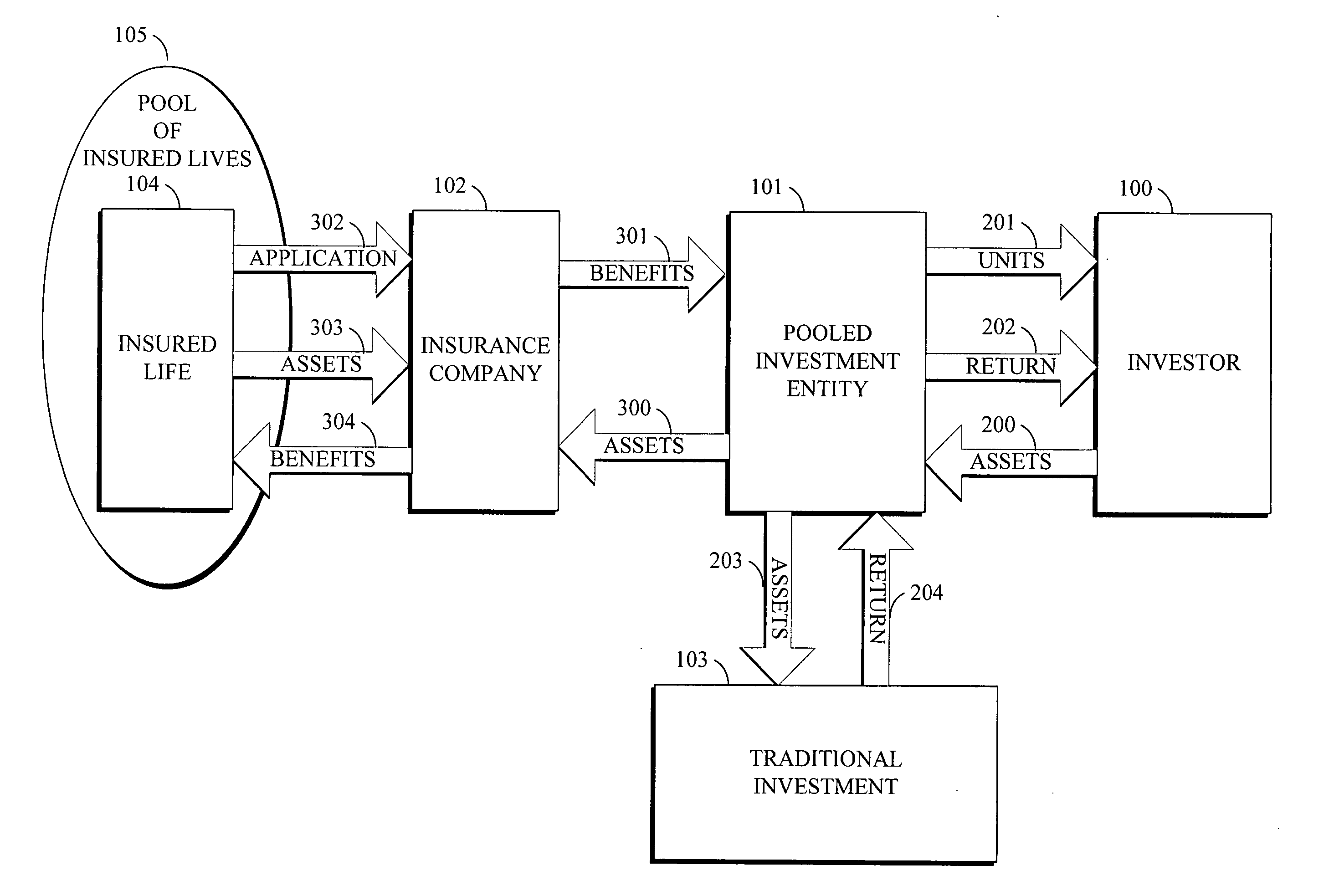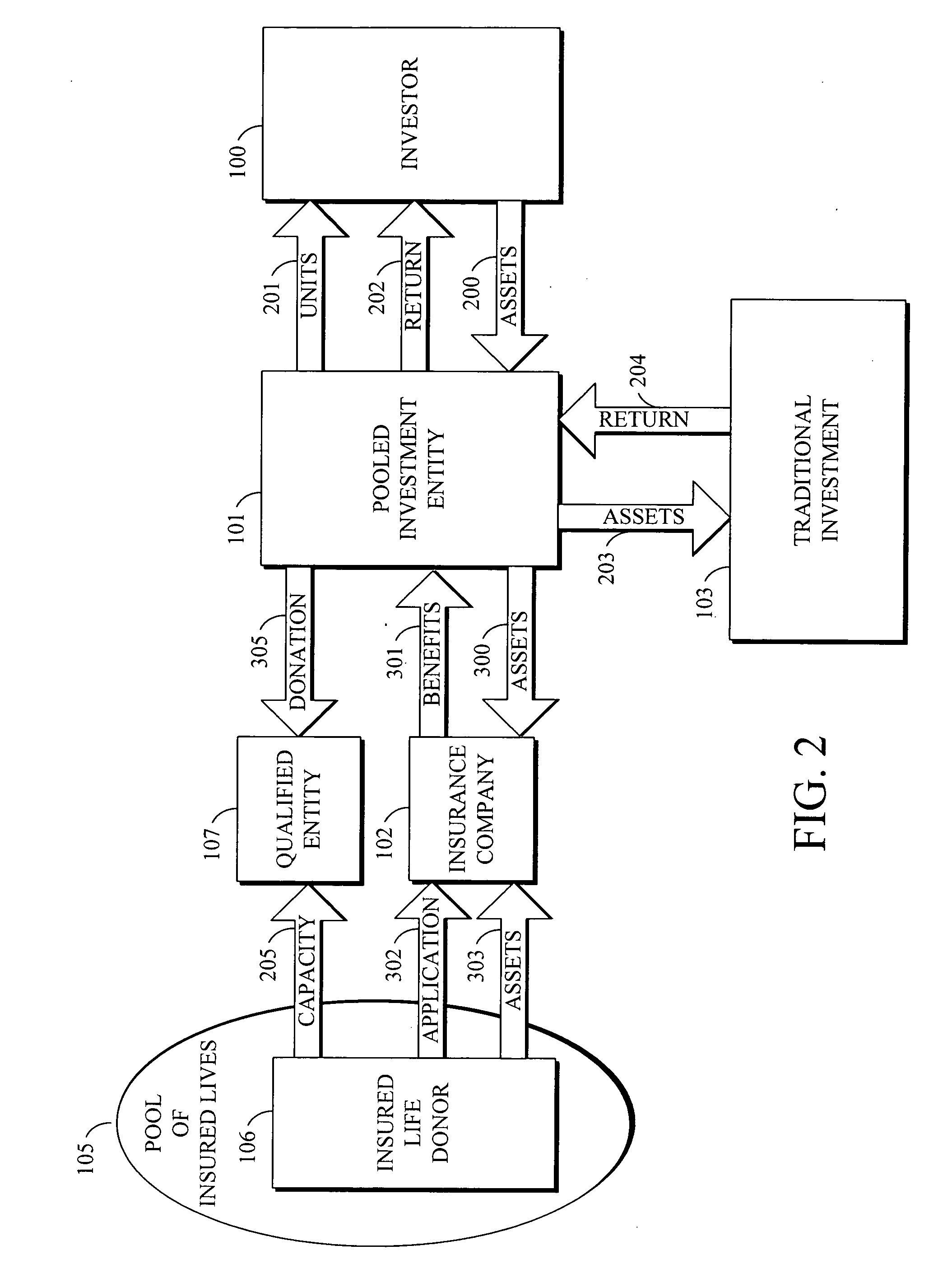Most investors are usually seeking the best possible return on their invested monies, and
financial security is generally a significant issue in their selection of investment vehicles.
The prevailing view of the investment
community is that investment in the death benefits of life insurance policies is a losing proposition.
Although the public investment market has invested in the equity instruments of the various insurance companies, the investment market has not invested directly in the insurance products, and particularly the death benefit paid upon the death of an insured.
While these various known investment methodologies are not without merit, most existing investment methods involving insurance companies have one or more significant drawbacks, such as undesirable tax consequences or limited investment returns based on fundamental structural elements of the underlying investments.
In these situations, additional opportunities for enhanced investment returns are similarly limited and lack significant investment potential.
Investors that investment in pooled investment entities desire to increase their wealth, not support the cause of a qualified entity.
Investors consider any transfer of assets to a qualified entity a loss, certainly not an investment that would be expected to yield an
economic return to the transferor.
The expense of finding persons and entities that are willing to support a qualified entity's cause is generally a considerable expense for the qualified entity.
If the person becomes unable to earn or dies, the qualified entity suffers the loss of potential future asset transfers from the person.
Without the collective assets of the transferors, the worthy social cause, which each transferor wants to see furthered, will likely not be developed as fully and timely.
However, it would generally be considered counterintuitive to have a qualified entity approach a pooled investment entity and ask for a donation.
A donation to a qualified entity by a pooled investment entity would be considered a loss by the investors in the pooled investment entity, and investors don't like losses.
However, many pass through entities (i.e., sub chapter S corporations) are limited in the number of investors and the type of investors that can participate in the entity.
Such limited pass through entities may place limitations on the invention, because of the large amount of money that has to be raised in order to secure the desired number of life insurance products.
Pooled investment entities do not generally purchase life insurance policies for a number of reasons.
Life insurance products have historically been considered poor investments.
Additionally, any investment in life insurance policies by the pooled investment entity would be counterintuitive, because the cost of insurance (i.e., the cost of providing the death benefit) removes a significant value from the investment.
It is counter intuitive to invest in a vehicle where the timing of the possible return is uncertain and uncontrolled as would be the
receipt of the death benefit upon the death of the insured.
Thus, there is generally a cost of insurance that is lost by the premium payor to the insurance company, and if the pooled investment entity is assumed to be able to invest its pool of assets in the same manner as the insurance company, it would typically not invest through the insurance company and lose the cost of insurance and the "profit" retained by the insurance company on the monies typically taken in by the insurance company.
Also, pooled investment entities do not purchase life insurance, because they have not assembled the "lives" to insure.
It may be argued that the pooled investment entities have an insurable interest in their investors, but it would be counterintuitive to use the investor's own money and purchase a life insurance policy on the life of the investor.
In general, people are not willing to let other people insure their lives and receive nothing in return.
Essentially, the insurance company loses money each time one of its insureds dies.
In the event that the actuarial calculations are not correct, the insurance company will lose profit and may become insolvent.
The actuarial calculations themselves may be in error, too small of a pool of insured lives may have been used in the calculations, or an unexpected large number of individuals (lives) within the pool may die, and the insurance company will lose financially.
Wealthy individuals often want large life insurance policies, but the after tax costs, gift tax considerations of funding the policies outside of their estate, the drain on capital, and other problems make the purchase of large life insurance policies problematic, if not impossible, for many who need such policies.
Lending arrangements that require the placement of assets under management are not as desirable as those that simply require the collateralization of assets.
However, it would be counter intuitive to encumber the assets of a pooled investment entity.
Although money given to a family limited partnership can be "pooled," the purpose of such partnerships is typically estate planning, not the generation of enhanced investment returns for the contributors.
They are not presently structured to invest in life insurance products covering lives within a pool of insured lives in order to obtain a return on investments made.
 Login to View More
Login to View More  Login to View More
Login to View More 


